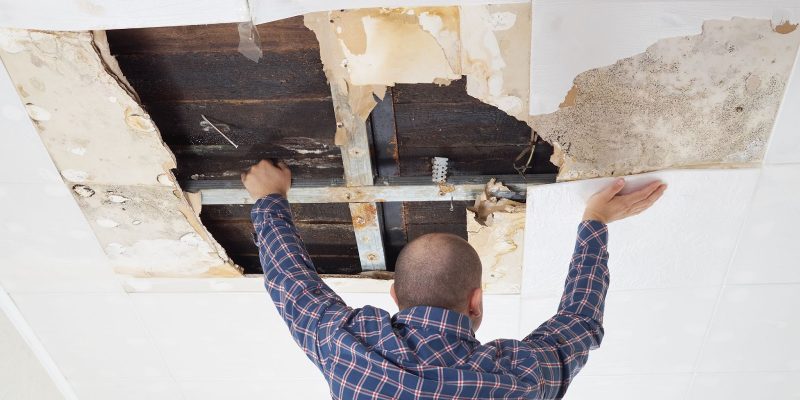Baffle walls are an integral component within wastewater treatment systems. Strategically positioned within tanks, baffles are vital in effectively removing sediments and organic matter from effluent streams. They facilitate critical processes like flocculation and sedimentation while preventing undesirable short-circuiting flows.
In recent years, the advent of smart composite technologies and digitally integrated systems heralded the launch of a new generation of intelligent baffle walls. These innovative walls significantly enhance treatment efficiency and plant productivity while minimizing operational costs and maintenance.
What are Baffle Walls?
Baffle walls are specially designed barriers submerged strategically across clarifier tanks and reactors. They regulate interior liquid flows to achieve the desired hydraulic motions and retention times for vital wastewater treatment steps and can be sourced from reputable suppliers such as endurocomposites.com.
Baffle walls aid in critical treatment processes like:
Settle Out Solids From The Water
Perforations across baffle surfaces enable controlled flows while trapping suspended particles. Sediments gradually agglomerate into flocs, which slide down baffle walls under gravity into collection zones. This isolation and capture of solids prevent them from getting discharged along with clarified effluents.
Promote Mixing Of The Water
Serpentine interior baffle layouts deviate straight gravity flows into indirect serpentine routes. The resulting circuitous liquid motions generate adequate hydraulic turbulence within reactors for uniform mixing. This facilitates improved contact and reactions between incoming organics, biological cultures, or chemical disinfectants.
Prevent Short-Circuiting Across Tanks
Tanks lacking baffles permit incoming raw water to traverse directly from inlets to outlets unimpeded. Such short-circuiting provides inadequate exposure for complete treatment. Baffles lengthily redirect all incoming batches along prolonged paths, ensuring sufficient retention time for purification. They function akin to mazes, forcing thorough contaminant removal prior to exit.
Thus, baffle walls upgrade treatment infrastructure from mere holding tanks into precisely tuned reactors, optimally facilitating every step of water conditioning.
5 Benefits Of Using Baffle Walls
Installing baffle walls across treatment systems provides significant performance enhancements and economic savings, as enumerated below:
- Boost Treatment Efficiency: By preventing shortcuts, baffles improve influent contact with treatment compounds and microbial cultures. They facilitate reactions and separation through tailored interior motions. All water gets purified uniformly without exception by the designated mechanisms.
- Upgrade Capacity Easily: Insert additional baffle units or tweak layouts to handle higher influent loads within the same tanks. By facilitating better distribution and transfer mechanics, existing infrastructure can accommodate growth easily without civil overhauls.
- Lower Maintenance: Baffle-induced flows prevent sediment pileups, eliminating manual desludging of tanks. Self-cleansing designs limit algal film formations across submerged walls as well. The resulting minimal maintenance keeps operational costs in check.
- Enhance Process Control: Baffle layouts, quantity, and perforation patterns fine-tune tank interiors to achieve targeted retention times, mixing intensity, and separating solids. These levers provide superior control over critical quality parameters.
- Compact Multi-stage Treatment: Strategic interior baffling facilitates multi-step treatments like flocculation, clarification, and disinfection within single compact reactors, saving construction costs.
These factors underscore why incorporating baffle walls could provide up to 30% enhanced throughput compared to baffle-less tanks for a given footprint and operating expense.
Types Of Baffle Walls
Different baffle classification systems depend on intended functionality, orientation, layout, or structure. We cover the common types used extensively across wastewater treatment below:
Parallel Baffle Walls
Straight walls placed parallelly across clarifier lengths regularly across tank floors aid settling processes. Uniformly spaced walls provide quiescent zones, prompting solids to settle downwards by gravity. Periodic raking and evacuation of collector troughs remove accumulated sludge.
Perforated Baffle Walls
While regulating flows, perforations enable controlled transfer between baffle-induced cells. Varied hole sizes and densities dissipate energy dissipation while limiting short flows. Perforations also reduce loads on the structures compared to solid walls.
Angled Baffle Walls
Inclined walls installed across reactor floors or mounted along tank walls infuse rotational motions, aiding mixing. Angled baffles can induce multi-directional flows, creating hydraulic turbulence through centrifugal routes.
Plate Baffle Walls
Vertical plate packs comprising tightly spaced flat plates generate a zig-zag motion between gaps as water rises. This labyrinth movement facilitates intensive micromixing while preventing channelized flows. Plate packs, hence, act as efficient flocculators and contactor units.
Additionally, overflow, inlet, and outlet walls placed perpendicular to flows streamline entrance and exit hydraulics across all tanks. Baffle shapes can be straight, wedged, triangular, circular, or custom, per specific motion requirements.
Materials For Baffle Walls
Baffle walls are constantly submerged in corrosive water throughout facility lifecycles spanning decades. The right structural materials make or break their durability and performance stability. Factors for evaluation include:
Structural Strength: Ability to withstand hydraulic, wind, and seismic forces
Corrosion Resistance: Long-term immersion in raw or treated water with chemicals
Cost Effectiveness: Favorable installed and lifecycle cost metrics
Here are some commonly utilized baffle materials with their relative pros and cons:
Concrete Baffles
Reinforced concrete baffles provide rugged performance at low first costs. However, corrosion and abrasion from long-term submersion degrades concrete, requiring replacement every 10-15 years. Frequent repairs and rehabilitation works make them expensive lifecycle-wise. Crumbling concrete also jeopardizes water quality and tank infrastructure.
Fiberglass Baffles
Painted fiberglass baffles demonstrate better corrosion resistance over concrete. However, anchoring fiberglass sections involve expensive stainless-steel assemblies. The systems demonstrate lower structural strength, needing external bracings for stability. Fiberglass walls still undergo UV and chemical degradation, needing refurbishment every 15-20 years.
Plastic Baffles
While plastics like HDPE, PP, PVC, etc, have excellent chemical resistance, poor structural strength limits large-scale baffling roles. Joining plastic sections into expansive walls requires extensive support systems and driving costs. Though durable, plastics have limited lifespans and need replacement down the line.
Innovative Baffle Wall Designs
Accelerating technology innovations focused on overcoming traditional tradeoffs have spawned smarter baffle infrastructure with embedded intelligence. Digitally integrated systems and composite materials drive this metamorphosis.
Baffle Walls With Integrated Aeration
Oxygenation systems infused directly into baffle walls boost treatment efficiency through stepped-up aerobic digestion. Diffusers dispersed across entire submerged areas instead of tank bases enhance air transfer efficiency using 30% less power. Integrated aerators eliminate secondary wall penetrations prone to leaks.
Baffle Walls With Self-Cleaning Surfaces
Surface coatings with mechanisms that prevent biofouling minimize manual cleaning interventions. Fluoropolymer-based coatings using proprietary surface patterning lower friction, enabling walls to self-slough off algal films continuously. The autonomous wall surface regeneration needs no external cleaning.
Baffle Walls With Sensors And Control Systems
Inbuilt sensor suites coupled with internet-of-things communication enable real-time performance monitoring. Data feeds detecting parameters like water levels, nutrient levels, microbial profiles, etc., allow for the automatic optimization of biological and chemical feed dosing. Control precision prevents overdosing, improving sustainability.
These trailblazing technologies uplift wastewater infrastructure functioning to unprecedented self-sufficiency levels. Users gain maximized returns from existing investments through round-the-clock peak performance, unlocking additional capacities. Facility lifecycles expand considerably even while needing bare minimum upkeep.
Conclusion
Baffle walls help construct the robust interior hydraulics necessary for efficient wastewater treatment across clarification, mixing, and aeration functions. The 21st century heralds an exciting phase where composite materials and embedded sensor technologies produce intelligent baffle walls. These game-changing platforms exponentially enhance productivity, efficiency, and lifecycles from existing treatment plants, unlocking fresh capacities free of additional civil costs.




















